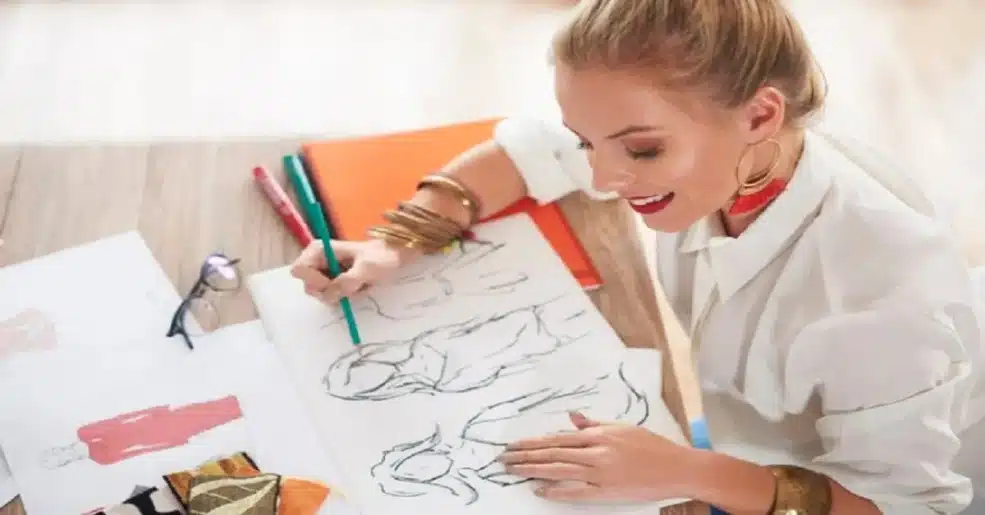Cute drawing, often characterized by its playful, charming, and endearing qualities, has become an increasingly popular art style in recent years. Whether you’re a beginner or an experienced artist, mastering the art of cute drawing can be both fun and rewarding. This comprehensive guide will explore the essentials of creating Cute:mnkymce3zh8= Drawing, from understanding the key elements to learning various techniques, styles, and tools that can help you bring your adorable illustrations to life.
Understanding the Appeal of Cute Drawings
Cute drawings, often referred to as “kawaii” in Japanese culture, have a universal appeal that transcends age, culture, and artistic experience. But what exactly makes a drawing “cute”?
Key Characteristics of Cute Drawings
The essence of cute drawing lies in its simplicity and the ability to evoke positive emotions. Here are some key characteristics that define this style:
- Exaggerated Features: One of the most recognizable traits of cute drawings is the exaggeration of certain features, such as large eyes, round faces, and small bodies. These proportions create a sense of innocence and playfulness.
- Soft, Rounded Shapes: Cute drawings often utilize soft, rounded shapes rather than sharp, angular lines. This creates a gentle and approachable appearance that is easy on the eyes.
- Minimalistic Details: Less is often more when it comes to cute drawings. Minimalistic details, like simple expressions and clean lines, allow the core features of the drawing to stand out.
- Bright, Cheerful Colors: The use of bright, pastel, and cheerful colors further enhances the cuteness of the drawing. These colors evoke happiness and positivity, making the illustrations feel more inviting.
The Emotional Connection
Cute drawings have a unique ability to create an emotional connection with the viewer. The exaggerated features, soft shapes, and cheerful colors tap into a sense of nostalgia and innocence, reminding us of childhood and simpler times. This emotional connection is a big part of why cute drawings are so beloved by people of all ages.
Getting Started: Tools and Materials for Cute Drawing
Before you begin creating your cute drawings, it’s important to have the right tools and materials. Whether you prefer traditional or digital art, having the right supplies will make the drawing process smoother and more enjoyable.
Traditional Drawing Tools
For those who enjoy the tactile experience of traditional art, here are some essential tools to get started with cute drawing:
- Pencils: Start with a set of high-quality pencils, ranging from soft to hard leads (e.g., 2B, 4B, 6B). Soft pencils are great for shading and creating darker lines, while harder pencils are useful for sketching and fine details.
- Erasers: A good eraser is essential for correcting mistakes and refining your drawings. Consider using a kneaded eraser for delicate adjustments and a standard rubber eraser for larger areas.
- Paper: Choose a smooth, high-quality paper that can handle erasing and layering. Sketchbooks with medium-weight paper are ideal for practicing and refining your drawings.
- Inking Pens: Inking your drawings can add a polished, finished look. Micron pens or fine-tipped markers are excellent choices for outlining and adding details.
- Colored Pencils or Markers: To bring your cute drawings to life, you’ll need a set of colored pencils or markers in a variety of bright and pastel colors. These tools allow you to add color and depth to your illustrations.
Digital Drawing Tools
If you prefer digital art, there are several tools that can help you create cute drawings with ease:
- Drawing Tablet: A drawing tablet is a must-have for digital artists. It allows for precise control and a natural drawing experience. Popular options include Wacom, Huion, and XP-Pen tablets.
- Digital Art Software: There are many digital art programs available, but some of the most popular for cute drawing include Adobe Photoshop, Clip Studio Paint, and Procreate. These programs offer a wide range of brushes, tools, and features that can help you create detailed and colorful illustrations.
- Stylus: A good stylus is essential for digital drawing. Look for a stylus that is compatible with your tablet and offers pressure sensitivity for varied line thickness.
Mastering the Basics: Drawing Cute Characters
Now that you have your tools ready, it’s time to dive into the basics of drawing cute characters. Whether you’re drawing animals, people, or fantasy creatures, the following tips will help you create adorable and appealing illustrations.
Step 1: Start with Basic Shapes
The foundation of any cute drawing begins with simple, basic shapes. Start by sketching circles, ovals, and squares to create the head, body, and limbs of your character. These shapes will serve as a guide for the proportions and placement of features.
- Head: Draw a large, round head as the focal point of your character. This is where you’ll place the exaggerated facial features that give your drawing its cute appeal.
- Body: Keep the body small and compact, often in an oval or rectangular shape. The body should be proportionally smaller than the head to maintain the cute aesthetic.
- Limbs: Sketch short, stubby limbs to match the small body. Rounded hands, feet, and fingers contribute to the overall cuteness.
Step 2: Add Exaggerated Features
Next, add the exaggerated features that are characteristic of cute drawings. Focus on the eyes, nose, mouth, and ears:
- Eyes: Draw large, expressive eyes with lots of detail. The eyes are the most important feature in cute drawing, as they convey the character’s emotions. Add highlights and reflections to make the eyes sparkle and appear more lively.
- Nose and Mouth: Keep the nose and mouth small and simple. A tiny, rounded nose and a small, curved smile can create a gentle, happy expression.
- Ears: If you’re drawing animals or characters with ears, keep them rounded and proportional to the head. Small, floppy ears add to the character’s charm.
Step 3: Incorporate Soft, Rounded Lines
Use soft, rounded lines to outline your character and define their features. Avoid sharp, angular lines, as they can make the drawing feel harsh or rigid. Soft lines create a more approachable and friendly appearance.
Step 4: Experiment with Expressions
Expressions are a key element of cute drawings. Experiment with different facial expressions to give your character personality. Happy, surprised, and curious expressions are commonly used in cute drawings. Don’t be afraid to exaggerate the expression to enhance the cuteness.
Step 5: Add Color and Details
Once your sketch is complete, it’s time to add color and details. Use bright, cheerful colors to bring your character to life. Consider adding blush to the cheeks, patterns to the clothing, or accessories like bows and hats for added charm. If you’re using traditional media, colored pencils or markers work well for adding color. For digital art, experiment with different brushes and blending techniques to achieve the desired look.
Exploring Different Styles of Cute Drawing
Cute drawing isn’t limited to one style. There are many variations and approaches you can take to create adorable illustrations. Here are a few popular styles to explore:
Kawaii Style
The kawaii style, originating from Japan, is one of the most popular forms of cute drawing. It features extremely exaggerated features, such as oversized heads and eyes, with minimalistic details. Kawaii characters are often depicted with pastel colors, simple shapes, and a childlike innocence.
Chibi Style
Chibi is another popular style that emphasizes small, cute characters with oversized heads and small bodies. Chibi drawings are often used in manga and anime, and they typically feature exaggerated expressions and playful poses. This style is perfect for creating cute and lively characters.
Cartoon Style
Cute cartoon drawings often combine exaggerated features with a more detailed and polished look. This style allows for more creative freedom, as you can experiment with different shapes, proportions, and color palettes. Cartoon-style cute drawings can be found in children’s books, animated series, and character design.
Realistic Cute Drawing
While most cute drawings are highly stylized, you can also create realistic cute drawings by incorporating lifelike details with exaggerated features. For example, drawing a realistic animal with large, expressive eyes can result in an adorable yet lifelike illustration.
Tips for Improving Your Cute Drawing Skills
As with any art form, practice and experimentation are key to improving your cute drawing skills. Here are some tips to help you on your journey:
- Practice regularly: Dedicate time each day to sketching and experimenting with cute drawings. The more you practice, the more confident you’ll become in your abilities.
- Study other artists: Look at the work of other artists who specialize in cute drawing. Analyze their techniques, styles, and how they achieve certain effects. This can provide inspiration and help you develop your unique style.
- Use references: Don’t be afraid to use references when drawing. Whether it’s a photo of an animal, a cartoon character, or another artist’s work, references can help guide your proportions, poses, and expressions.
- Experiment with different tools: Try different drawing tools and techniques to see what works best for you. Experimenting with new media can lead to unexpected results and help you discover new ways to create cute drawings.
Conclusion: Embrace the Fun and Creativity of Cute Drawing
Cute drawing is a joyful and rewarding art form that allows you to express creativity, evoke emotions, and bring happiness to others. Whether you’re drawing for fun, creating characters, or developing a personal style

